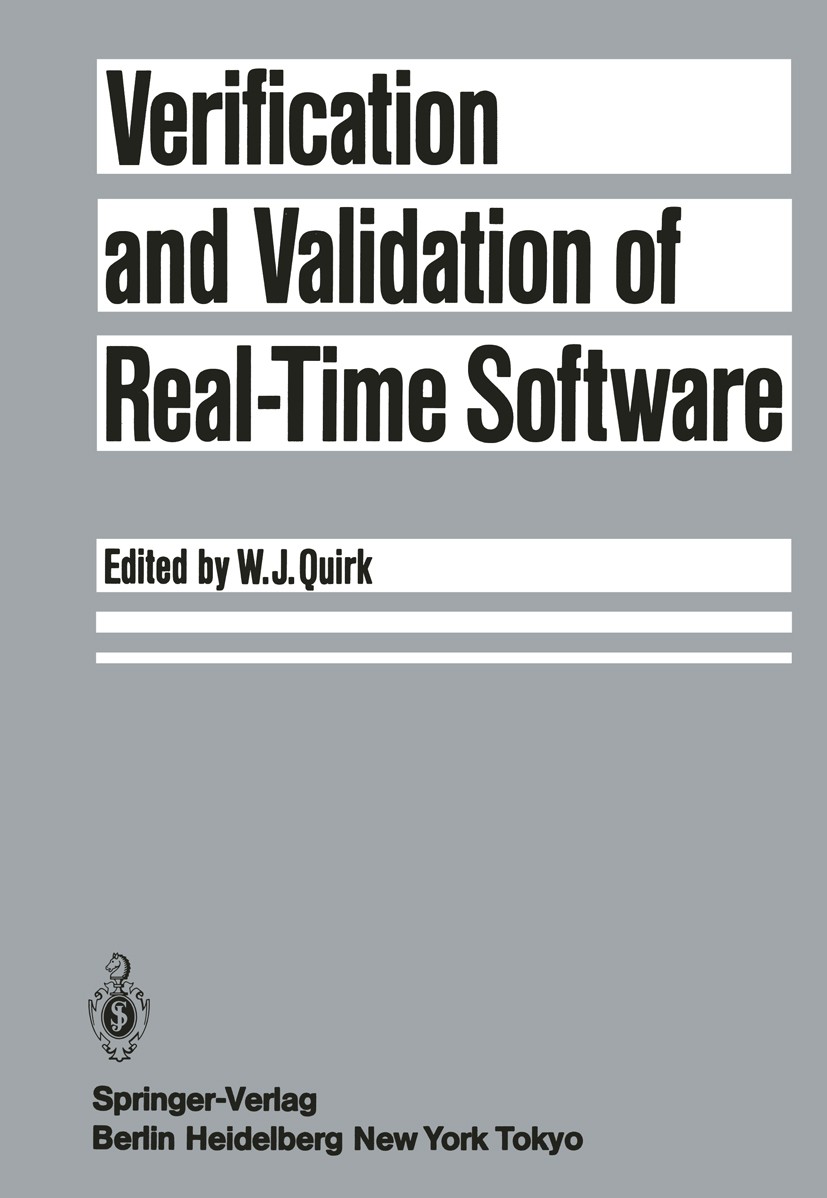| 书目名称 | Verification and Validation of Real-Time Software | | 编辑 | William J. Quirk | | 视频video | http://file.papertrans.cn/982/981703/981703.mp4 | | 图书封面 |  | | 描述 | W.J.Quirk 1.1 Real-time software and the real world Real-time software and the real world are inseparably related. Real time cannot be turned back and the real world will not always forget its history. The consequences of previous influences may last for a long time and the undesired effects may range from being inconvenient to disastrous in both economic and human terms. As a result, there is much pressure to develop and apply techniques to improve the reliability of real-time software so that the frequency and consequences of failure are reduced to a level that is as low as reasonably achievable. This report is about such techniques. After a detailed description of the software life cycle, a chapter is devoted to each of the four principle categories of technique available at present. These cover all stages of the software development process and each chapter identifies relevant techniques, the stages to which they are applicable and their effectiveness in improving real-time software reliability. 1.2 The characteristics of real-time software As well as the enhanced reliability requirement discussed above, real-time software has a number of other distinguishing characteristics. F | | 出版日期 | Book 1985 | | 关键词 | Realzeitverfahren; Time; development; software; system; validation; verification | | 版次 | 1 | | doi | https://doi.org/10.1007/978-3-642-70224-2 | | isbn_softcover | 978-3-642-70226-6 | | isbn_ebook | 978-3-642-70224-2 | | copyright | Springer-Verlag Berlin Heidelberg 1985 |
The information of publication is updating

|
|
 |Archiver|手机版|小黑屋|
派博传思国际
( 京公网安备110108008328)
GMT+8, 2025-12-27 20:23
|Archiver|手机版|小黑屋|
派博传思国际
( 京公网安备110108008328)
GMT+8, 2025-12-27 20:23


